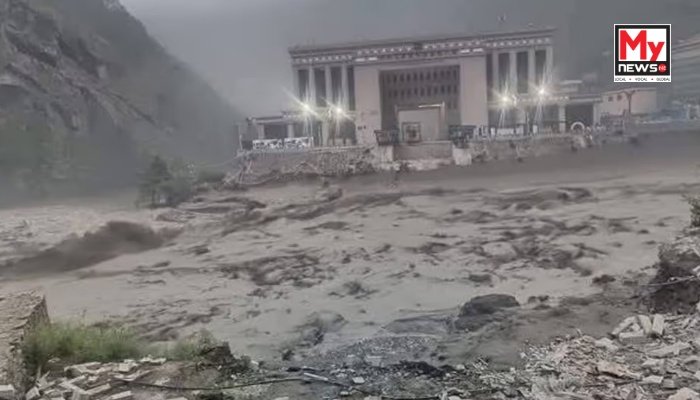Nepal Border Region Rocked by Devastating Floods, 18 Missing
Rasuwa, Nepal – A calamitous flash flood originating from the Lhendekhola river, flowing from Tibet into Nepal along the Nepal-Tibet border, has left a trail of destruction and at least 18 individuals missing since early Tuesday morning. The deluge, triggered by intense rainfall, has severely impacted connectivity in Rasuwa district, washing away crucial infrastructure and crippling several major hydropower projects.
The missing include 12 Nepali nationals, comprising three police officials and nine members of the public, along with six Chinese nationals. Assistant Chief District Officer of Rasuwagadhi, Druba Prasad Adhikari, confirmed the grim figures, stating that search and rescue operations are underway but are heavily hampered by adverse weather conditions.
The surging waters have swept away bridges and numerous vehicles, including eight electric vehicles from an EV charging station in Timure and nine container units from the Rasuwa Customs Yard. Sections of the Pasang Lhamu Highway, particularly the Syafrubesi-Rasuwagadhi stretch under Gosainkunda Rural Municipality-2, have been obliterated by landslides and severe road erosion, effectively cutting off vehicular access to Rasuwagadhi. This disruption is significantly impeding ongoing rescue efforts in the affected areas.
Further compounding the crisis, the Rasuwagadhi Hydropower Project’s dam has sustained substantial damage. The Armed Police Force (APF) Nepal has deployed an emergency team of 21 personnel, including seven specially trained responders, led by Assistant Inspector Rabindra Dahal, to the affected zone. However, the dangerously high river flow continues to pose a formidable challenge to rescue operations. Authorities have issued a stern warning, urging the public to steer clear of riverbanks and to undertake travel in the area only if absolutely essential.
The floods have delivered a severe blow to Nepal’s energy sector, causing a complete halt in electricity generation of up to 200 megawatts from key hydropower projects in Rasuwa. According to Baburaja Maharjan, CEO of Chilime Hydropower Company, the flood has rendered multiple power stations inoperable. These include the 111 MW Rasuwagadhi Hydropower Project, 60 MW Trishuli 3A, 21 MW Trishuli, and 15 MW Devighat Hydropower Plant. While acknowledging that 200 MW might not seem critical for the national grid, Maharjan highlighted that the “entire external infrastructure” of the Rasuwagadhi project has been completely destroyed, making a near-term resumption of operations highly unlikely for both Rasuwagadhi and Trishuli 3A. The Bhote Koshi and Trishuli corridor projects have also suffered extensive damage, with no immediate prospect of restarting electricity production. Despite this significant setback, Maharjan noted that the immediate impact on national electricity supply may be minimal, as most of Nepal’s hydropower projects are currently operating at full capacity due to the ongoing monsoon season.
Read More: National Highway 27 Blocked: Lifeblood of Southern Assam Severely Disrupted by Landslides

